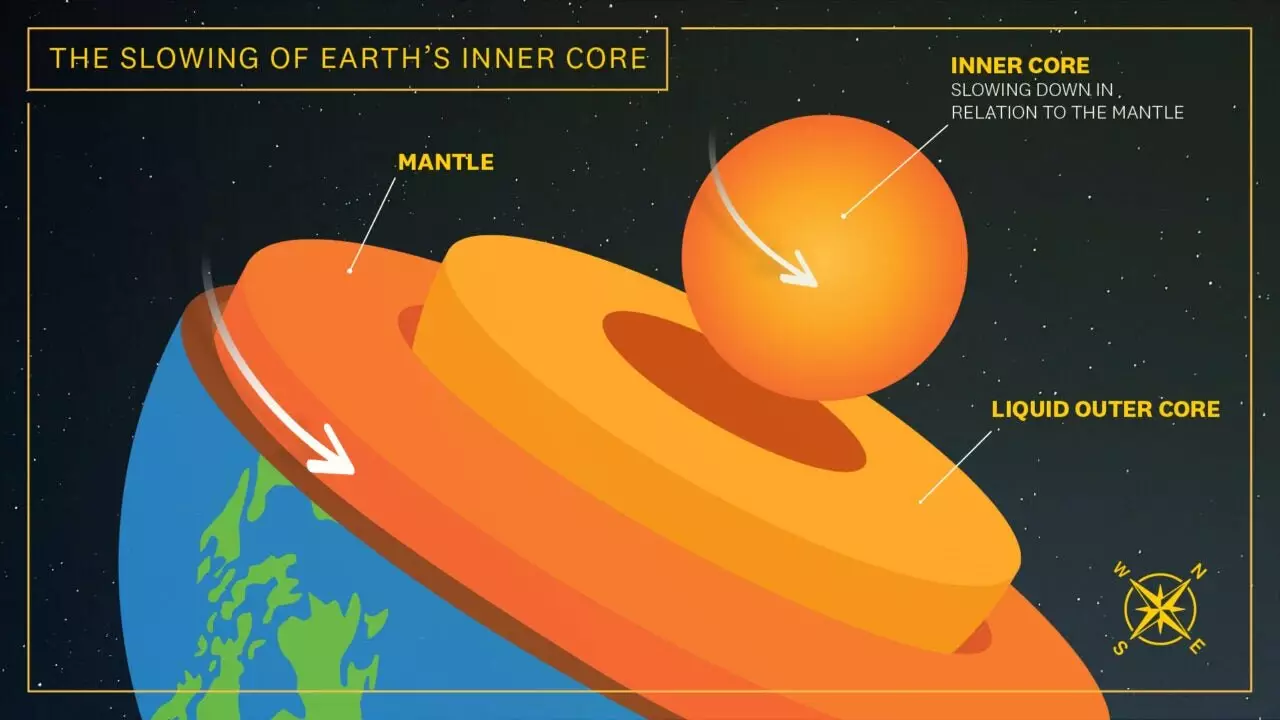Recent research conducted by scientists at the University of Southern California has shed light on a long-debated topic in the scientific community regarding the movement of the Earth’s inner core. Contrary to previous beliefs, the USC study has provided evidence that the inner core is actually backtracking and slowing down in relation to the planet’s surface. This groundbreaking discovery challenges existing models and opens up new possibilities for understanding the dynamics of our planet.
Lead researcher John Vidale, Dean’s Professor of Earth Sciences at USC, was initially surprised by the findings of the study. However, after analyzing multiple observations that pointed towards the same conclusion, it became clear that the inner core had indeed slowed down for the first time in many decades. This unambiguous evidence has significant implications for our understanding of the Earth’s inner workings and raises important questions about the forces that drive this phenomenon.
The inner core of the Earth is a solid iron-nickel sphere located deep beneath the planet’s surface. Roughly the size of the moon, the inner core is surrounded by a liquid iron-nickel outer core. Despite its importance in the Earth’s structure, the inner core remains a mystery to researchers due to its inaccessible location. To study its movement, scientists rely on seismic waves generated by earthquakes to create models and predictions.
Vidale and his team adopted a novel approach in their research, focusing on waveforms and repeating earthquakes to gather data. By analyzing seismic events recorded around the South Sandwich Islands and utilizing data from past nuclear tests, the researchers were able to track the movement of the inner core over several decades. This innovative method provided valuable insights into the forces influencing the inner core’s speed and direction.
The discovery of the inner core slowing down has raised questions about its potential impact on the Earth’s surface. While the exact consequences remain uncertain, Vidale suggests that the changes in the inner core’s movement could affect the length of a day by fractions of a second. Although subtle, these changes could have far-reaching implications for the planet’s overall dynamics and geophysical processes.
Future Research
Looking ahead, the USC scientists are eager to delve deeper into the trajectory of the inner core to unravel the mysteries behind its shifting movement. By expanding their research and incorporating new data sources, they hope to gain a more comprehensive understanding of the inner core’s behavior. Vidale emphasizes the importance of continuous research in this field to uncover the full extent of the inner core’s role in shaping the Earth’s structure.
The recent findings by the USC scientists offer valuable insights into the dynamic nature of the Earth’s inner core. By challenging existing theories and presenting new evidence, this research paves the way for further exploration and discovery in the field of geophysics. As we continue to unravel the mysteries of our planet’s inner workings, the significance of understanding the inner core’s movement cannot be overstated.


Leave a Reply